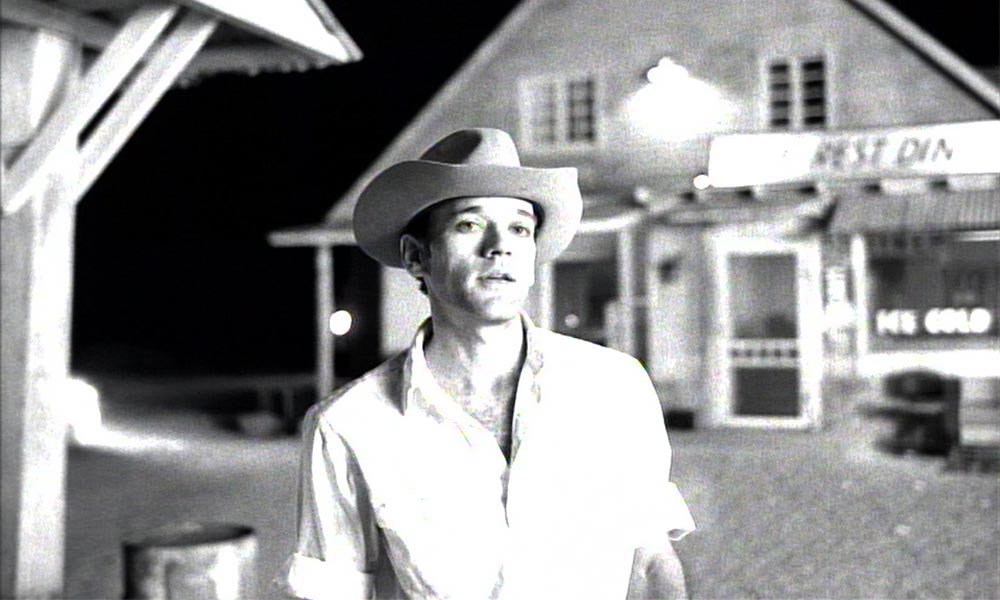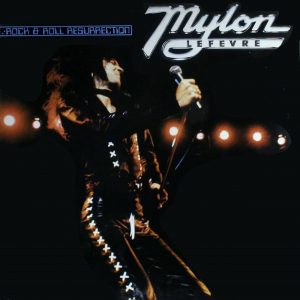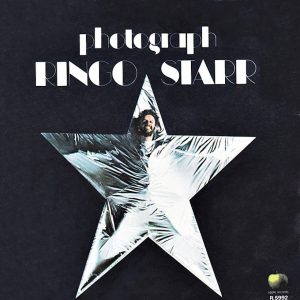Now celebrating its 25th anniversary with a deluxe, Dolby Atmos-enhanced four-disc reissue, R.E.M.’s multi-million-selling eighth album, Automatic For The People, cemented the Athens, Georgia, quartet’s reputation as the most influential alt.rock band on the planet when it was first released in 1992. Described by bassist Mike Mills as “our most cohesive record”, this transcendent work is now regularly cited as one of rock’s touchstone albums. As with Out Of Time, however, R.E.M. chose not to tour to support the release, instead promoting the album with a series of highly evocative Automatic For The People videos.
For the Automatic For The People campaign, R.E.M. commissioned promos for all six of the record’s individual singles. They collaborated with innovative directors Peter Care, Kevin Kerslake, Jake Scott and Jem Cohen, all of whom have shared their insights into working with R.E.M. for the Automatic For The People videos, exclusively for uDiscover Music.
‘Drive’ (October 1992; directed by Peter Care)
For the first two Automatic For The People videos, ‘Drive’ and ‘Man On The Moon’, R.E.M. worked alongside Peter Care, whose track record also includes collaborations with Bruce Springsteen, Tom Petty, Depeche Mode and Cabaret Voltaire. Care had worked with R.E.M. previously, capturing the memorable visuals for Out Of Time’s fourth single, ‘Radio Song’.
Further enhanced by John Paul Jones’ swelling string arrangement, ‘Drive’ featured a lyric inspired by David Essex’s 1973 hit ‘Rock On’. Despite lacking any discernible chorus, this brittle, yet immensely powerful song became a transatlantic Top 30 hit. For the song’s equally striking promotional film, Peter Care captured the band in black-and-white at the Sepulveda Dam in Los Angeles.
“Michael Stipe said to me something on the lines of, ‘We want to make it the greatest crowd-surfing music video of all time,’ the director recalls. “And then, ‘To include Peter, Mike and Bill, we want to re-enact a 60s civil-rights demonstration – with the guys being hosed down by power hoses.’
“As well as wanting black-and-white, Michael mentioned lasers and strobes… and that the camera should always look down on the crowd-surfing,” Care elaborates. “We chose the location purely for practicality – a place that was easy for the fans to find and where we could drain the water. I don’t think the dam is recognisable in the video – I did not want a sense of place but, instead, a world defined by the crowd.”
Despite the starkness of the black-and-white film, there’s also a messianic, Ziggy Stardust-esque quality inherent in the visuals for ‘Drive’…
“Yes, and when Michael mentioned that he’d shaved his chest especially to be shot shirtless, I became a little concerned that the rock star, sex god aspect was a bit too on-the-nail, with the call-to-arms refrain in the song,” Peter Care recalls.
“When I look back at our meeting about ‘Drive’, I’m surprised I had the temerity to critique his shirtless idea – and that Michael respected me enough to listen,” he continues. “When he took me through the idea of crowd surfing, I immediately thought of a more ‘poetic’ and ‘historical’ image that a white shirt would lend to the images. I thought about the classical paintings, Death Of Marat (he died in his tub with his shirt on) and The Wreck Of The Hesperus – people clinging to a raft in a storm. I also thought that the white shirt would be more startling under the strobe lights.”
‘Man On The Moon’ (November 1992; directed by Peter Care)
Built upon a storyline involving the late US comedian Andy Kaufman meeting Elvis Presley in Heaven (though, in the song, Heaven is a truck stop), ‘Man On The Moon’ builds from dreamy, calypso-style verses to a memorably anthemic chorus. It remains a huge fan favourite.
Again shooting in black-and-white, Peter Care filmed most of the song’s John Steinbeck-esque visuals in the Californian desert near Palmdale, choosing this location because “it was the closest place to Los Angeles that would give us beautiful as well as ugly desert, electric pylons, the truck-stop set with the gable roof, a working bar for the interiors and the road for Bill [Berry]’s 18-wheeler scene”.
Unusually for R.E.M, much of the song’s imagery is visually represented in the promotional film, something which is also atypical of Peter Care’s work. “Throughout my career, I never took the lyrics of a song as inspiration for an idea for a music video,” the director reveals. “Maybe the title, but mostly just the general feel of the music and the art-versus-commerce needs of the band or artist.
“I always thought it too banal to illustrate the lyrics, especially in a literal way,” he adds. “So when I met Michael and he talked about specific ideas (walking with a staff of wood, stepping over a snake, etc), of course I knew right away that we should illustrate every line as literally as possible. But as we filmed, Michael had second thoughts about some of the ideas. For example: somehow, on the set and during the edit, the shot of him walking with a staff was replaced by an archival shot of an astronaut walking on the moon.”
Then, of course, there are the folk mouthing the words to the song in the truck stop. Coming from an original brief from the band, this cast of extras were assembled in Los Angeles and bussed up to the film shoot for the day, resulting in one of the most memorable scenes from the Automatic For The People videos. “We wanted them to look like Midwesterners, salt of the earth types… people with an innate ‘R.E.M.-ness’,” Peter Care says.
“It was important to convey to each actor how important they’d be in the video. A couple of days ahead of the shoot, we gave them cassettes with the choruses and made them promise to learn the words, encouraging them to sing the song, not just lip-sync. They all came through. With this little desert town bar filled with the sound of the repeated choruses, and as we filmed each person in turn, the atmosphere and sense of camaraderie grew to become quite palpable.
“For me, it was very emotional,” the director concludes. “A unique moment in my film-making career.”
‘The Sidewinder Sleeps Tonite’ (February 1993; directed by Kevin Kerslake)
Currently finishing a documentary on Joan Jett, Kevin Kerslake has worked with a host of alt.rock luminaries such as Bob Mould, Ride and Mazzy Star, in addition to collaborating with superstars Prince and Nirvana. As he tells uDiscover Music, he was put together with R.E.M. through Warner Bros’ video commissioner Randy Skinner, after which “we broke some bread one sunny day, and the horses were out of the gate”.
Thought by many to be the poppiest track on Automatic For The People, ‘The Sidewinder Sleeps Tonite’ was always a contender for a single. Accordingly, director Kerslake shot most of the video on an old soundstage in Los Angeles, though the machine inserts were done in Topanga Canyon outside the city, in artist Jonathan Borofsky’s backyard.
Echoing sentiments expressed by all the filmmakers that R.E.M. worked with for the Automatic For The People videos, Kerslake reveals that Michael Stipe and the band were all actively involved in the process.
“In the case of ‘… Sidewinder’, Michael’s finely-tuned film sense was primarily expressed through his performance,” he says. “As simple as the video’s premise was – the band atop a giant, rotating wheel that was broken into four quarters which each represented a season – it was instantly apparent that Michael’s camera-awareness and command of space were going to yield some pretty magical stuff. We rotated each band member through every season. Whichever season he was in, Michael occupied that space with both a sense of playfulness and authority, which I found endlessly alluring.”
‘Everybody Hurts’ (April 1993; directed by Jake Scott)
Arguably the album’s most universally recognised hit, the soulful ballad ‘Everybody Hurts’ was accompanied by one of the most memorable Automatic For The People videos, shot on the outskirts of San Antonio, Texas, by director Jake Scott. Son of Blade Runner director Ridley Scott, Jake is also renowned for his collaborations with other stellar artists such as The Rolling Stones, Radiohead, Soundgarden and Tori Amos.
The fact that Scott was living in LA when he was commissioned to shoot the clip influenced the video, which was based around a traffic jam in which a car carrying the four members of R.E.M. is directly involved.
“One spends a lot of time in the car in LA,” Scott says. “The forlorn, yearning quality of the song, its tempo, suggested the slow roll of a traffic jam, which is where you might find a true cross-section of humanity. [Federico Fellini’s 1963 film] 8½ was really the inspiration that was quoted in my treatment. We were walking a fine line with regard to 8½ as a reference. None of us wanted to plagiarise the maestro, more pay homage. I think we did!”
Nominated for a Grammy Award in 1994, the ‘Everybody Hurts’ video was shot near an interchange on the I-10, the main highway running from LA to Jacksonville, Florida, and the shoot famously required a host of extras. Jake Scott still recalls it with fondness.
“The architecture was reminiscent of LA freeway structures, a kind of concrete trench, that we were able to actually shut down and control,” he reveals.
“The local authorities were incredibly accommodating. We cast local actors and people off the street. I then sat with each, asking them what specifically “hurts”, what that meant to them. After a lot of back and forth, we decided to shoot it in colour as we felt it would lend realism, as we loved the palette of greys against the blue sky and all the different tones of the cars. I learned a lot making that video, which remains my favourite.”
‘Nightswimming’ (July 1993; directed by Jem Cohen)
A long-time R.E.M. collaborator, Jem Cohen had already made several films with the band, including the promo videos for ‘Talk About The Passion’ and Out Of Time’s ‘Country Feedback’, when he returned to add his skills to the Automatic For The People videos. Acclaimed for his observational portraits of urban landscapes and his usage of small-gauge formats such as Super 8 and 16-millimetre, the New York City-based filmmaker used a similar approach when shooting the visuals for ‘Nightswimming’: an elegant, piano-based ballad concerning nocturnal skinny-dipping.
“I’d been very fond of R.E.M.’s music from their first single, ‘Radio Free Europe’, and I went to see them early on when they opened for The Ventures at a tiny club in New Haven, Connecticut,” Jem Cohen recalls. “I was fascinated by R.E.M.’s readily apparent interest in art/filmmaking and the freer, highly unorthodox approach they took in their early videos, especially those directed by Michael [Stipe] and the extraordinary early ones made by [Michael Stipe’s University of Georgia art professor] James Herbert.
“It was all very raw and entwined with small-gauge filmmaking outside the film and music industries, though by the time of ‘Nightswimming’ I was doing 16mm too,” Cohen says. I made what I wanted to make with ‘Nightswimming’, handed the results to Michael when I was done, and that was that.”
‘Find The River’ (October 1993; directed by Jodi Wille)
Since working with R.E.M., LA filmmaker Jodi Wille has gone on to work as an assistant and development consultant to feature-film director Roland Joffe (The Killing Fields, The Mission). In 2012, her first feature-length documentary, The Source Family, premiered at the South By Southwest Film Festival to sold-out screenings.
However, her contribution to the Automatic For The People videos, for the album’s graceful final single, ‘Find The River’, was actually her first paying gig. Though included on the R.E.M. video collection Parallel, it’s the least-known promo here, but its simple black-and-white footage – primarily of R.E.M. performing the song at their Clayton Street rehearsal studio in Athens – perfectly complements one of the band’s most glorious songs.
“Like myself, R.E.M. never wanted to do the same thing twice, or do the expected,” Peter Care says, looking back on the experience of working with the band for the Automatic For The People videos. “They encouraged experimentation, questioning convention. The fact that I was able to make seven videos for them in all gave me the ultimate satisfaction and, looking back, immense pride.”
Declaring that “R.E.M. were the band that helped define me as a director”, Jake Scott agrees that the iconic Athens outfit captured a special moment in time with Automatic For The People: “They were at their height, the album arguably a masterpiece, so it was an amazing moment to witness and be a part of,” he says. “R.E.M. were/are simply a unique rock band, complex in definition, wonderfully emotional, and risk-takers, too.”
Featuring the album remixed in Dolby Atmos, plus a host of outtakes and demos, and all of the Automatic For The People videos, the deluxe 25th-anniversary edition of the album can be bought here.




